Research shows that in Greece the main strain for employees is long working hours, which has recently deteriorated dramatically due to the financial crisis. In the microworld of our school environment we, teachers and students, feel that this is the case too. That’ s why we have focused on the improvement of our school premises, so that they are more pleasant and inspiring. After all, promoting knowledge correlates with positive and creative attitude.
Our research has led us to the decision of reforming our classroom by changing the painting and desk arrangement.
According to experts wall colour affects our mood, so we have decided to change our classroom’s wall colours to tirquiz and light yellow, colours that are said to help people focus and create calming enviroment.
The task itself was pleasant for both students and teachers. Through our collaboration we practiced team work and responsibility. It was indeed a productive and unforgetable experience!
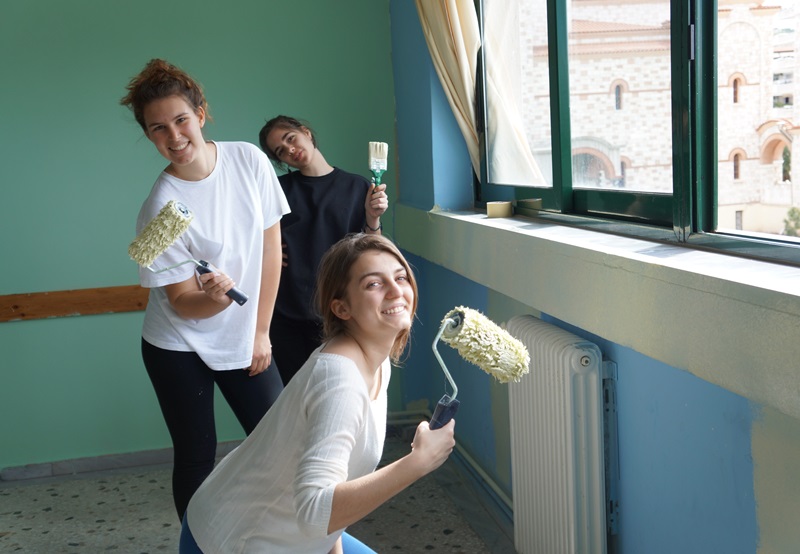
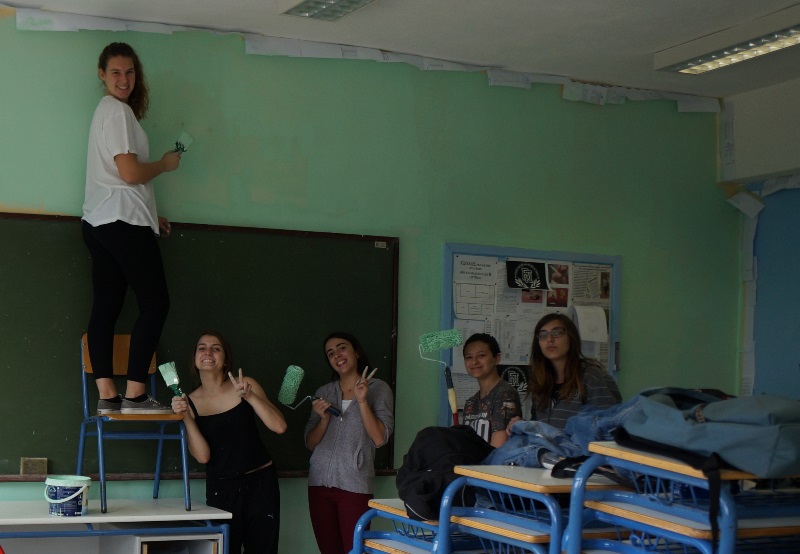
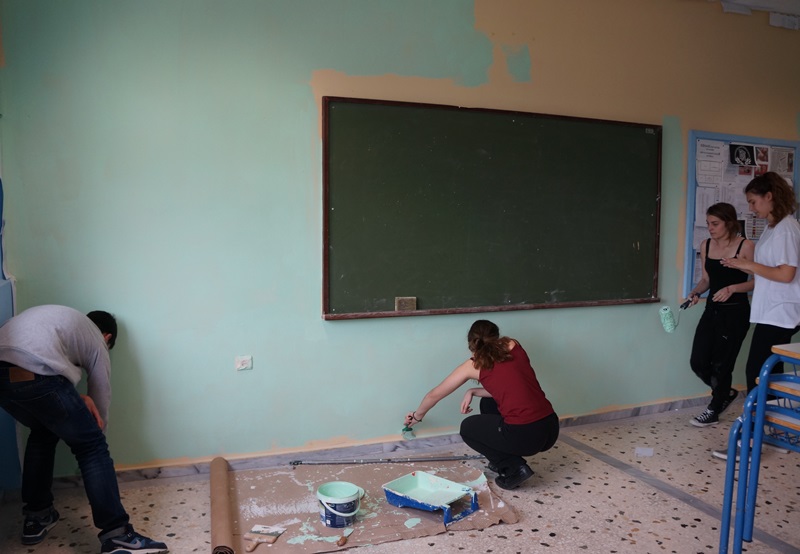
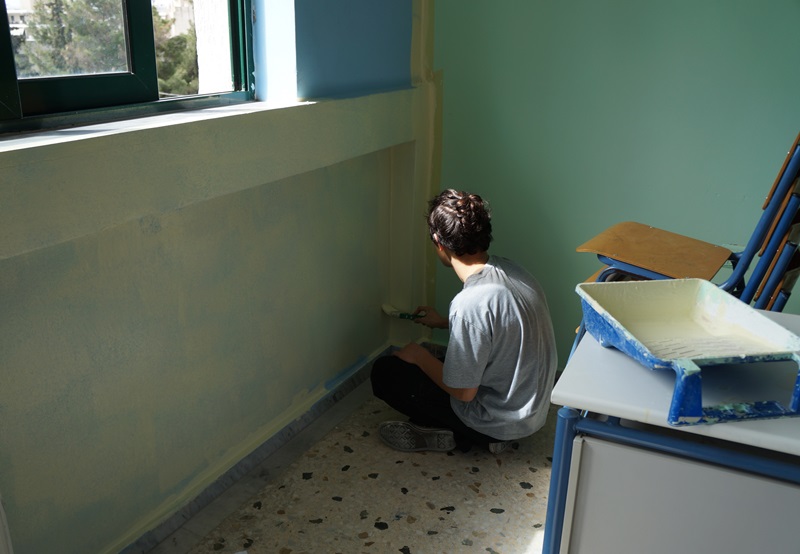
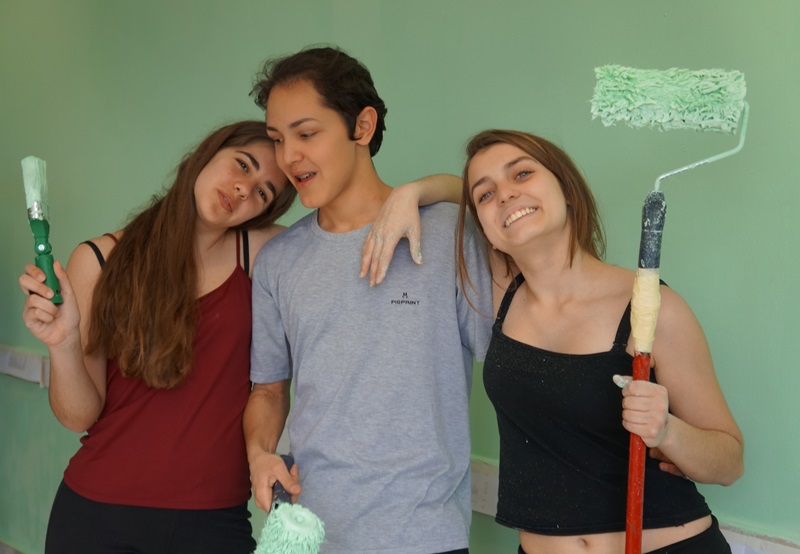

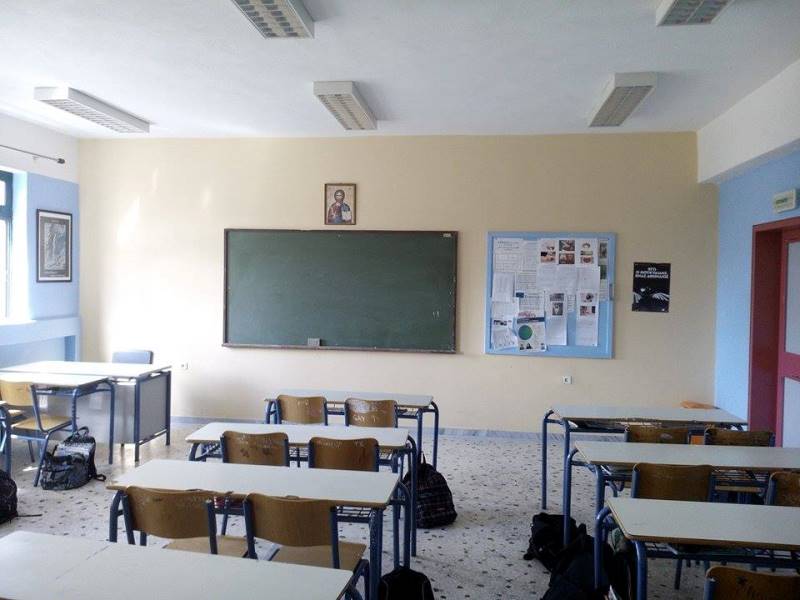

It is said that desk arrangement in a classroom develops different interactions between teachers and students, either student-centered or teacher-centered. That’s why, we, along with our supervising teachers, took the initiative to rearrange the desks of one classroom in 3 different patterns as depicted in the figures below.



1st seating arrangement - 2nd seating arrangement - 3rd seating arrangement
The 1st seating arrangement is the standard arrangement for all the classrooms in our school. Before our research was conducted we had already tried this arrangement for the 1st semester. We applied the 2nd and the 3rd arrangement during the 2nd semester and at the end of the school year we asked both students and teachers to fill in a questionnare with similar questions in order to express their perceptions on which arrangement is the most effective.
The questions answered by students were:
Q1: It’s easier for me to concentrate and pay attention during the lesson.
Q2: I grew more interested in paying attention and participating during the lesson.
Q3: The lesson has become more pleasant and the long hours spent in class less tiring.
Q4: The lesson runs more smoothly and there has been a decrease in student misbehavior.
Q5: Teacher – student communication is more direct and the dialogic form of the lessons is promoted.
Q6: I feel like the teaching revolves around my needs and my participation is promoted.
Q7: Interactive methods of teaching are improved and the collaboration between the students is more effective.
Q8: Free space is created and movement is facilitated.
The questions answered by teachers were:
Q1: Students are more focused during the lesson.
Q2: The lesson has become more pleasant and the students seem less tired or/and indifferent.
Q3: Students seem to grow more interested in both paying attention and participating during the lesson.
Q4: Teacher – student communication is more direct and the dialogue aspect of the lessons is promoted.
The lesson runs more smoothly and there has been a decrease in student misbehavior.
Q5:A more student – centered approach of the conduction of the lessons is promoted.
Q6: A more student – centered approach of the conduction of the lessons is promoted.
Q7: Interactive methods of teaching are improved and the collaboration between the students is more effective.
Q8: Free space is created and movement is facilitated.
Q9: Supervision of the class is more effective.
The results of the questionnaires were:
From figures 1 and 2 it is obvious that, both students and teachers regard the 3rd arrangement as the most successful, with the students supporting this option more strongly. For the 2nd arrangement they seem to be neutral. Finally, they both agree that the 1st arrangement is the least effective.
It is clear from the figures 3 and 4 that there is a difference between the attitude of students and teachers concerning the 1st arrangement. On the one hand, the students’ answers seem to be balanced, while on the other hand, the majority of teachers maintain that the 1st arrangement is good.

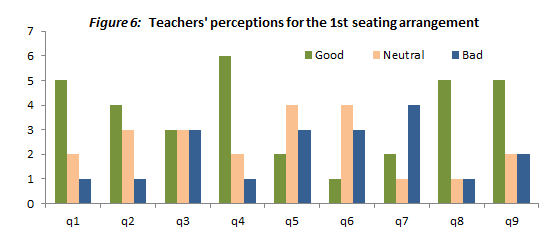
What is really clear from figures 5 and 6 is the fact that both students and teachers answered that the 1st arrangement is the best option regarding question 4, which says ‘The lesson runs more smoothly and there has been a decrease in students’ misbehavior. Additionally, there is an obvious contrast between the answers of students and professors about question 2. The students believe that the 1st arrangement helped them grow their interest in paying attention and participating during the lesson, while professors strongly believe that this kind of arrangement isn’t that useful.

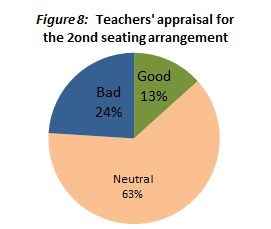
As shown in figures 7 and 8, for the second arrangement both students and professors are neutral. However, the percentage of students believing this kind of arrangement is good is higher than the percentage of professors believing the same thing.


As depicted in figures 9 and 10, a high percentage of professors felt that the 2nd arrangement is a neutral option. The students’ answers differ from the professors’ in only 3 questions. Students believe that this kind of arrangement is really efficient in making the lesson pleasant, in improving interactive methods of teaching and collaboration between students and finally, in creating more free space.
Both students and professors believe the 3rd arrengement is the best option. Almost the same percentage of them regarding this arrengemend as good, neutral or bad.


An extremelly high percentage of both professors and students believe that the 3rd arrengement is the best option in question 3 which reads that the lesson is more pleasant and less tiring. The only obvious difference is the fact that students think that this arrangement helps them to be more focused on the lesson while the professors believe the opposite.